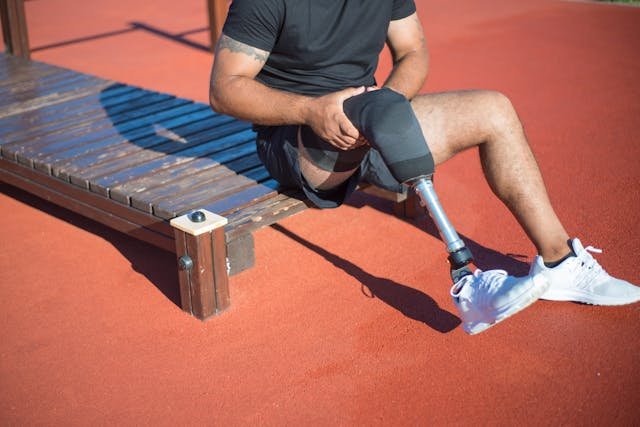A trans-radial prosthetic is more than just a device—it becomes part of your daily life, your independence, and your confidence. Whether you use it for basic tasks or more advanced movements, how well you take care of your prosthetic will directly affect how well it performs over time. Regular care and maintenance are key to keeping your prosthesis reliable, safe, and comfortable for years to come.
At Robobionics, we design each trans-radial prosthetic with quality and durability in mind. But even the best technology needs proper attention. This guide will help you understand how to care for your trans-radial prosthesis in a simple, clear, and effective way. From cleaning and handling to daily checks and long-term support, here’s everything you need to know to make sure your prosthesis stays strong and dependable—just like you.
Understanding the Importance of Prosthetic Maintenance
Keeping your prosthetic in good shape is not just about how it looks. It’s about how it feels, how it works, and how safe it is. Like any machine or tool, your prosthetic needs care to function well over time.
Why Daily Use Leads to Wear and Tear
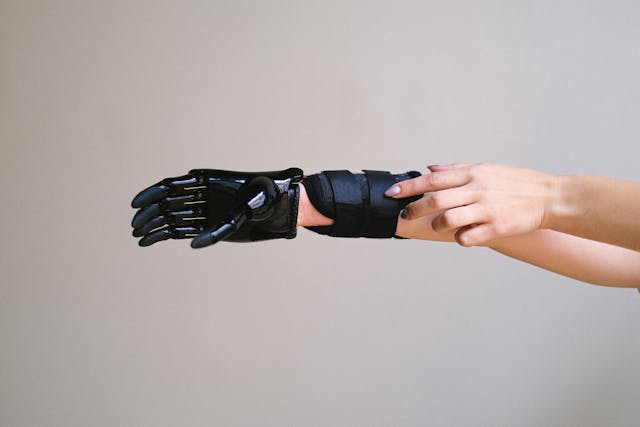
Every time you use your prosthetic, its parts move, flex, and support your actions. Whether you’re picking up a cup, typing on a keyboard, or opening a door, the joints and surface of your prosthesis go through stress. Over time, small parts may loosen, the socket may shift, and even the smallest screw may wear out.
This wear is natural and expected. It doesn’t mean something is wrong. But ignoring it can lead to discomfort, poor control, or even device failure. That’s why staying aware of how your prosthetic feels and responds each day helps you catch small issues early.
Robobionics designs prosthetics with long-term use in mind, but daily checks and routine maintenance will keep them working at their best. A little effort every day goes a long way in keeping your prosthetic smooth and reliable.
Comfort Depends on Consistency
When a trans-radial prosthetic fits well and works smoothly, it feels like part of you. But that comfort can change if the socket loosens, if the liner wears out, or if the alignment shifts. Even small changes can lead to pressure points, skin irritation, or fatigue in your arm and shoulder.
By checking your prosthetic regularly, you’ll notice early signs of discomfort. This gives you the chance to adjust or seek help before problems grow. You’ll feel better, move easier, and avoid interruptions in your daily life.
At Robobionics, we always remind users that comfort and function go hand in hand. If your prosthetic doesn’t feel right, it’s a sign that it may need adjustment, cleaning, or repair.
Protecting Your Investment
A trans-radial prosthetic is a carefully engineered tool. It’s also a meaningful investment—one that supports your independence and lifestyle. Taking care of it ensures you get the most out of it for the longest time possible.
Repairs and replacements can be costly if issues are ignored too long. But simple daily habits, like cleaning the socket, drying the liners, and storing the prosthetic safely, can prevent major problems.
Our users at Robobionics often tell us that learning how to care for their prosthetic gave them a greater sense of control and responsibility. It’s not just about the device—it’s about protecting your mobility and freedom every day.
Daily Care for Your Trans-Radial Prosthesis
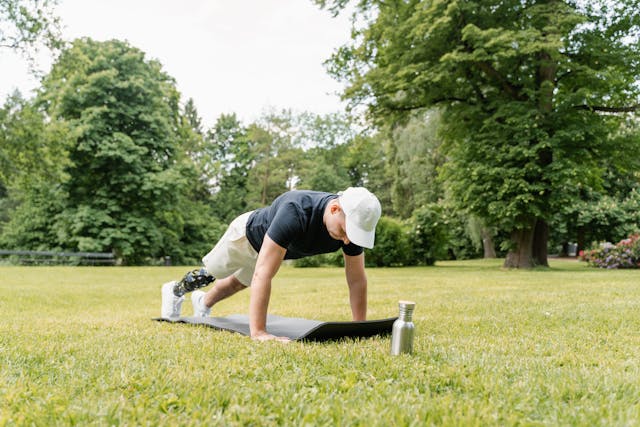
What you do each day with your prosthetic affects how well it holds up over time. Simple, regular habits can prevent discomfort, reduce damage, and make your device last longer without problems.
Cleaning Your Socket and Liner
The part of your prosthetic that touches your skin—especially the socket and liner—needs regular cleaning. These parts collect sweat, skin cells, and dust throughout the day. If not cleaned, they can cause odor, irritation, or even skin infections.
At the end of each day, remove the liner (if applicable) and wipe the inside of the socket with a damp cloth. Use mild soap and water—nothing harsh or abrasive. Make sure everything is dry before you put it on again, because moisture can damage the material or cause rashes.
If your prosthetic includes a silicone or gel liner, clean it gently with soap and warm water, rinse thoroughly, and let it air dry. Do not use hairdryers or heaters, as heat can warp the material. This basic routine helps protect both your skin and the device.
Checking for Looseness or Damage
Before you wear your prosthetic in the morning, give it a quick check. Look at the joints, screws, and straps. Is anything loose? Does anything feel different than usual? Run your hand along the surface and feel for cracks, sharp edges, or unusual friction.
If your prosthetic has moving parts—like a mechanical hand—open and close it a few times. Make sure the motion is smooth and there’s no clicking or resistance. If something doesn’t feel right, it’s better to pause and check than to use it and risk more damage.
If you ever feel unsure about what you’re seeing or feeling, contact your prosthetist or Robobionics support. We’d rather fix a small issue early than wait until it becomes a bigger problem.
Storing Your Prosthetic Safely
When you’re not wearing your prosthetic—especially at night—it’s important to store it properly. Place it in a clean, dry area, away from heat, dust, or sharp objects. Avoid placing heavy items on top of it or letting it drop.
If your prosthetic includes electronic parts, such as sensors or rechargeable batteries, keep them away from moisture and extreme temperatures. If it comes with a storage bag or case, use it to protect the device from scratches or dust buildup.
Proper storage doesn’t take long, but it prevents damage and extends the life of your prosthetic. It also gives you peace of mind knowing your device is ready and safe to use the next day.
Preventing Skin Problems and Discomfort

Skin health is closely connected to prosthetic care. How your skin feels can tell you a lot about how well your prosthetic fits and functions. Paying attention to small changes can prevent major discomfort.
Managing Sweat and Friction
Your skin produces sweat throughout the day, especially under a socket or liner. Trapped moisture can cause itching, rashes, or even sores. If sweat builds up, it can also make the socket slippery, affecting your grip and control.
Wearing a clean, breathable liner or sleeve can help absorb sweat and reduce friction. You can also use antiperspirants on the residual limb—just make sure they’re skin-friendly and non-irritating. Be careful not to over-tighten the socket in response to slipping, as this can create pressure spots.
If sweating becomes a daily issue, speak with your prosthetist. There may be alternate liners or materials that better suit your skin type and daily routine.
Watching for Redness or Sores
Check your residual limb every day when you remove your prosthetic. Look for signs of redness, blisters, or dry patches. If you notice the same spot getting irritated over and over, it could mean that your socket needs adjusting.
Pain or discomfort should never be ignored. It might be caused by a change in limb shape, a worn-out liner, or uneven weight distribution inside the socket. If left untreated, these small issues can lead to painful wounds or infections.
Robobionics users are encouraged to report these signs early. Our team is trained to identify the root cause and provide quick solutions—whether it’s a padding change, socket adjustment, or liner replacement.
Taking Breaks When Needed
While it’s great to wear your prosthetic consistently, your skin and muscles also need time to rest. If you feel sore or tired, give yourself permission to take the prosthetic off for a while and let the limb breathe.
This is especially important during hot weather, long workdays, or after heavy use. Removing your prosthetic for short breaks helps reduce moisture, relax the skin, and restore blood flow to the area.
At Robobionics, we encourage users to find a rhythm that works for them. Using a prosthetic is a long-term journey—not a race. Listening to your body is one of the best ways to stay healthy and comfortable.
Scheduling Regular Check-Ups and Tune-Ups
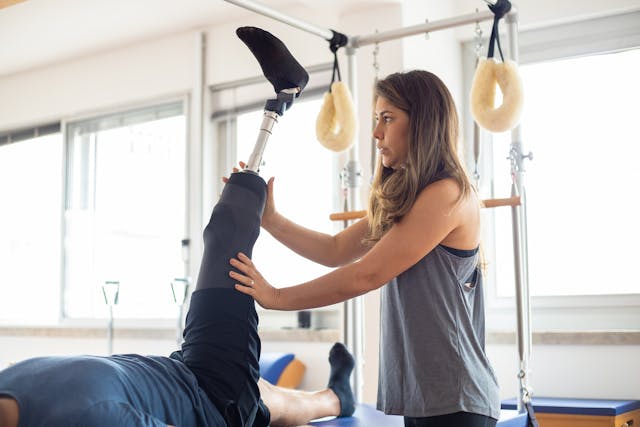
Even if everything feels fine, it’s still important to have your prosthetic checked by a professional from time to time. Regular maintenance keeps the device working well and gives you a chance to update or upgrade as needed.
Tracking Fit and Alignment
Over time, your body may change. Muscle growth, weight loss, or even small shifts in posture can affect how your socket fits. What felt perfect six months ago might start feeling tight, loose, or misaligned today.
A professional check-up can measure these changes and make small adjustments to improve comfort and movement. Sometimes the solution is as simple as adding padding or changing the liner. Other times, the socket may need reshaping.
At Robobionics, we recommend users schedule check-ups every few months—especially in the first year after receiving their prosthesis. Early adjustments prevent bigger issues later and keep you walking strong.
Servicing Moving Parts and Electronics
If your trans-radial prosthetic includes joints, grips, sensors, or electronics, it’s important to have them serviced regularly. Dust, sweat, and daily wear can affect performance, even if nothing seems wrong at first.
Our technicians inspect each part, clean the connections, and test the response of the device. We also check the battery (if present), charging system, and control settings to make sure everything is working properly.
Regular servicing keeps your prosthetic responsive and safe. It also protects your warranty and ensures that any updates or improvements can be applied quickly.
Updating as Your Needs Evolve
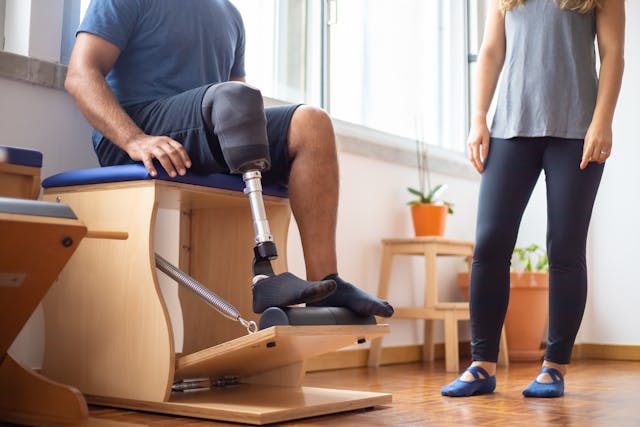
As your life changes, your prosthetic should evolve with you. Maybe you’ve started a new job, picked up a hobby, or want more flexibility in your daily routine. During regular visits, you can explore options for upgrades or add-ons that match your current lifestyle.
This could mean a new terminal device, better grip control, lighter materials, or updated socket technology. We work with you to review your goals and make changes that help you move more freely and confidently.
Your prosthetic is a tool—but it should never feel like a limitation. With regular updates, it continues to support you as you grow and explore new possibilities.
Creating a Long-Term Care Routine That Works for You
Maintaining your trans-radial prosthetic shouldn’t feel like a burden. In fact, the best care routines are simple, consistent, and built around your daily life. With just a few minutes of attention each day, you can protect your prosthetic, your skin, and your overall comfort—without overthinking it.
Building a Daily Habit That’s Easy to Follow
The key to long-term care is making it part of your routine. Just like brushing your teeth or tying your shoes, caring for your prosthetic should become a natural habit. This includes wiping down your socket at night, checking for redness on your limb, and storing your prosthesis properly when not in use.
You don’t need complicated tools or special equipment to take care of your prosthetic. A soft cloth, mild soap, and a dedicated space to store your device are often enough. By keeping your care routine simple, it becomes easier to follow every day without skipping or forgetting.
Robobionics helps users create customized care checklists based on their prosthetic design and daily activities. These lists are short, practical, and made to fit smoothly into your morning or evening routine.
Listening to Your Body and Being Proactive
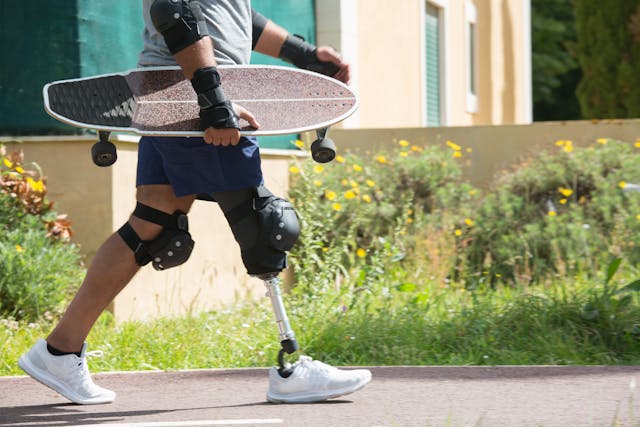
Your body will often tell you when something’s off—sometimes before the prosthetic does. If you notice soreness, skin irritation, or changes in how your prosthetic feels during use, take it seriously. These small signs are your body’s way of asking for attention.
It’s always better to act early than wait for a bigger issue. Addressing a small fit issue or skin irritation today can prevent discomfort, infections, or major prosthetic damage tomorrow. This mindset not only protects your health but also saves time and cost in the long run.
At Robobionics, we remind every user that being proactive is a form of independence. Knowing your body, noticing changes, and taking action when needed gives you more control over your mobility and well-being.
Staying Connected with Your Support Team
Even if your prosthetic is working perfectly, regular communication with your prosthetist or care team helps you stay ahead of future challenges. You can share feedback, ask questions, or get quick advice on minor adjustments—all of which strengthen your long-term success.
Robobionics offers easy ways to stay in touch with our support team. Whether you prefer calls, texts, or online chats, we’re here to guide you through care routines, recommend maintenance, or schedule in-person tune-ups whenever needed.
You’re never alone in this journey. With the right care routine and a responsive support system behind you, your trans-radial prosthetic will continue to work for you—day after day, year after year.
Conclusion
Taking care of your trans-radial prosthetic is not just about keeping it clean or making it last longer. It’s about protecting your comfort, supporting your independence, and helping you move through each day with confidence. Whether you’re reaching for a glass, typing at work, or simply relaxing at home, your prosthetic plays an important role in how you live—and how you feel.
Daily habits like cleaning the socket, checking your skin, and storing your device properly go a long way. Staying consistent with small routines helps you avoid bigger issues, from discomfort and irritation to mechanical wear. And with regular tune-ups and check-ins, your prosthetic can continue to support you even as your life, goals, or body changes over time.
At Robobionics, we believe that a well-cared-for prosthetic leads to a well-lived life. That’s why we offer more than just advanced devices—we offer ongoing support, training, and care plans that fit into your world. From the first fitting to long-term follow-ups, we’re here to walk with you, every step of the way.
Need help with maintaining your trans-radial prosthesis? Book a free care consultation with Robobionics today and experience what long-term comfort and support truly feel like.



